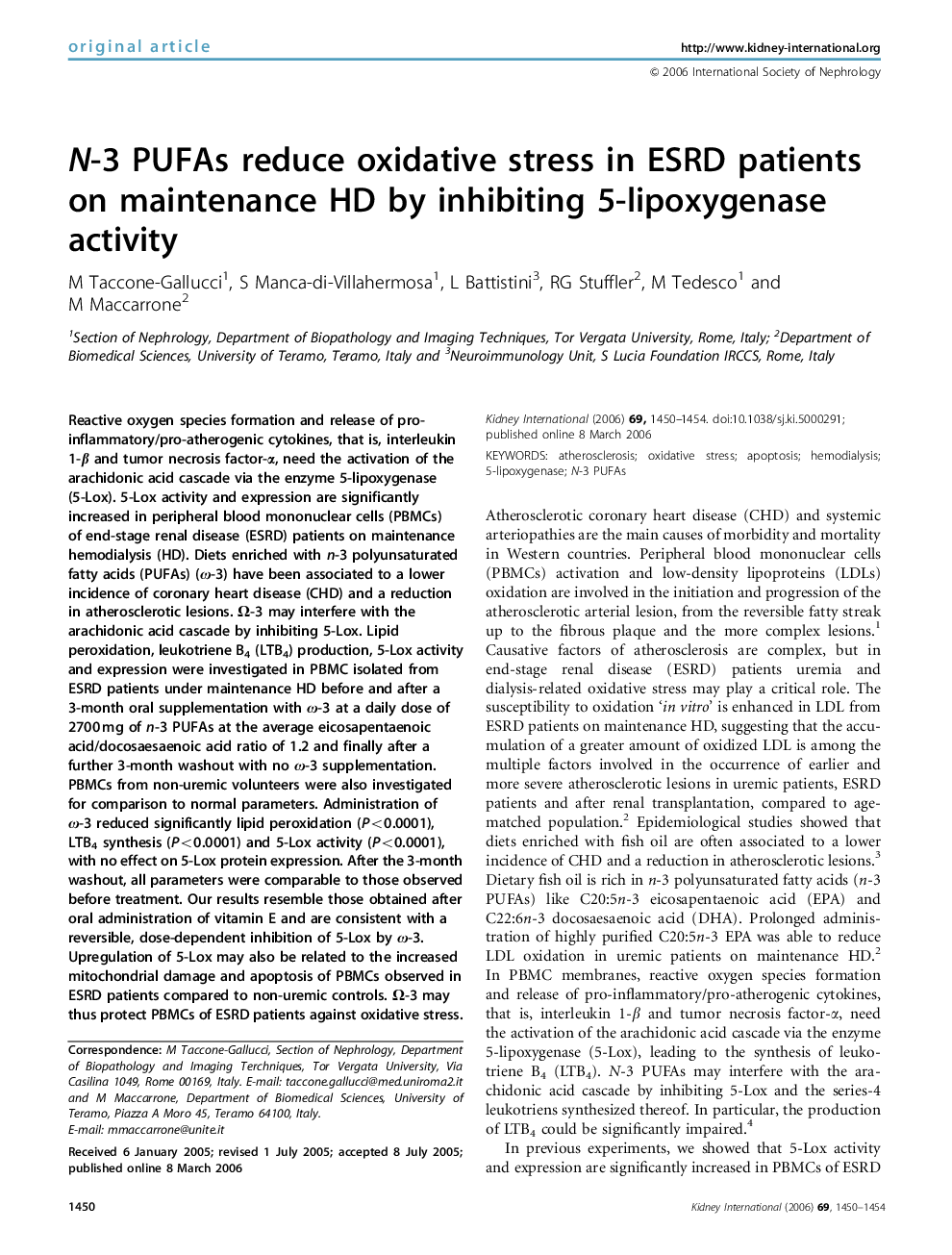| Article ID | Journal | Published Year | Pages | File Type |
|---|---|---|---|---|
| 3886240 | Kidney International | 2006 | 5 Pages |
Reactive oxygen species formation and release of pro-inflammatory/pro-atherogenic cytokines, that is, interleukin 1-β and tumor necrosis factor-α, need the activation of the arachidonic acid cascade via the enzyme 5-lipoxygenase (5-Lox). 5-Lox activity and expression are significantly increased in peripheral blood mononuclear cells (PBMCs) of end-stage renal disease (ESRD) patients on maintenance hemodialysis (HD). Diets enriched with n-3 polyunsaturated fatty acids (PUFAs) (ω-3) have been associated to a lower incidence of coronary heart disease (CHD) and a reduction in atherosclerotic lesions. Ω-3 may interfere with the arachidonic acid cascade by inhibiting 5-Lox. Lipid peroxidation, leukotriene B4 (LTB4) production, 5-Lox activity and expression were investigated in PBMC isolated from ESRD patients under maintenance HD before and after a 3-month oral supplementation with ω-3 at a daily dose of 2700 mg of n-3 PUFAs at the average eicosapentaenoic acid/docosaesaenoic acid ratio of 1.2 and finally after a further 3-month washout with no ω-3 supplementation. PBMCs from non-uremic volunteers were also investigated for comparison to normal parameters. Administration of ω-3 reduced significantly lipid peroxidation (P<0.0001), LTB4 synthesis (P<0.0001) and 5-Lox activity (P<0.0001), with no effect on 5-Lox protein expression. After the 3-month washout, all parameters were comparable to those observed before treatment. Our results resemble those obtained after oral administration of vitamin E and are consistent with a reversible, dose-dependent inhibition of 5-Lox by ω-3. Upregulation of 5-Lox may also be related to the increased mitochondrial damage and apoptosis of PBMCs observed in ESRD patients compared to non-uremic controls. Ω-3 may thus protect PBMCs of ESRD patients against oxidative stress.
